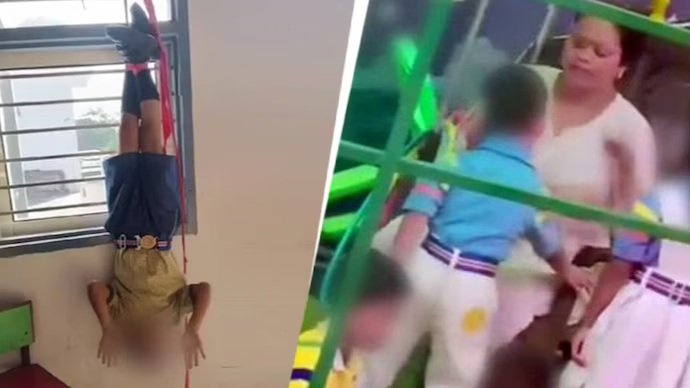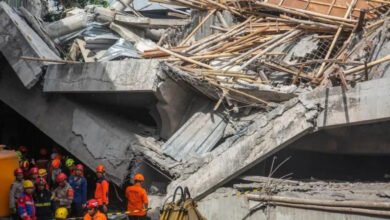Hung, Beaten, Humiliated: 7-Year-Old Brutalized in Haryana School
Physical Abuse

Introduction
When a 7-year-old boy was tied with ropes, hung upside down from a school window, and mercilessly beaten by the very adults meant to protect him, it wasn’t discipline, but an act of torture.
The shocking incident in Panipat, Haryana, captured on viral videos, forces us to ask: If schools become spaces of cruelty, where can children truly be safe?
The Shocking Incident
The brutality unfolded at a private school on Jattal Road, where a Class 2 student was punished for not completing his homework. Acting on the principal’s instructions, the school driver, Ajay, tied the boy, hung him upside down, and thrashed him.
What makes the cruelty even more chilling is that Ajay made video calls to friends during the abuse and later uploaded the clip online. The video’s circulation exposed the assault to the boy’s family and the wider public, sparking outrage.
Another video showed the principal, Reena, slapping and beating small children in front of their classmates. She defended her actions by claiming the children had “misbehaved,” but her justification clashed with the Ministry of
Education’s clear ban on corporal punishment. Parents further alleged that children were sometimes forced to clean toilets as a form of punishment.
Discipline or Damage?
For a 7-year-old, this kind of “discipline” carries lasting damage:
- Emotional trauma: humiliation, fear, and broken trust in authority figures.
- Social stigma: public shaming in front of peers, amplifying the harm.
- Physical risk: injuries from being tied and suspended.
- Aversion to education: school becomes a place of dread rather than learning.
Systems That Failed the Child
This case exposes deep cracks in school monitoring and accountability:
- Weak enforcement of child safety rules.
- Unregulated authority of school staff, allowing teachers and even non-teaching staff like drivers to abuse power.
- Cultural normalization of harsh punishments under the excuse of discipline.
- Failure to establish complaint channels for students and parents until tragedy or outrage occurs.
The Police Response: A Step Toward Justice
Following the family’s complaint, police registered a case under multiple provisions of the Juvenile Justice Act. Both the principal and the driver were arrested, with DSP Satish Vats confirming ongoing investigations. While this intervention shows accountability is possible, the broader question remains: Will justice in one case change the system, or will another child suffer tomorrow?
What Must Change
To prevent schools from becoming unsafe spaces, India must move beyond reactive outrage and embrace reforms:
- Strict enforcement of the ban on corporal punishment in all schools, with penalties for violators.
- Mandatory child protection training for all school staff, including non-teaching personnel.
- Independent monitoring committees with community and parental representation.
- Clear whistleblowing mechanisms so children and parents can safely report abuse.
Conclusion
The Panipat case should not be remembered merely as a viral video scandal. It must serve as a turning point for how India views and handles child safety in schools.
- Parents must demand accountability.
- Authorities must monitor schools proactively.
- Educators must replace fear with empathy in their teaching.
If we allow torture masquerading as discipline to define childhood, we end up failing the very children we should protect.





